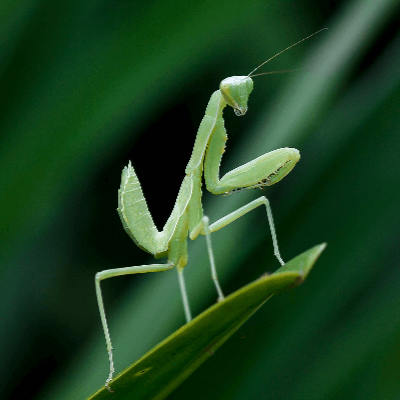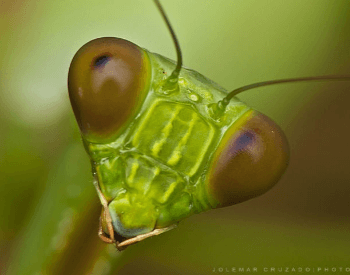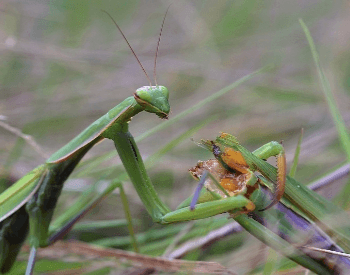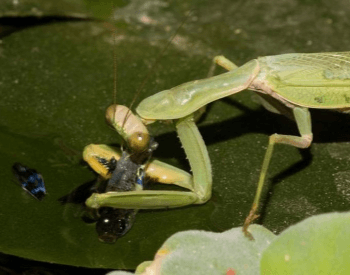
- Common Name: Praying Mantis
- Kingdom: Animalia
- Phylum: Arthropoda
- Class: Insecta
- Superorder: Dictyoptera
- Order: Mantodea
- Family: 21 Different Familes
15 Praying Mantis Facts for Kids
- Mantises are a large group of insects that are members of the Mantodea order.
- They common name for these insects is praying mantis, which is due to their appearance.
- There are over 2,400 species of insects that are given the common name praying mantis.
- Praying mantises are closely related to cockroaches and termites.
- Most praying mantis species are carnivores and ambush their prey. There are a few species that actively hunt prey.
- Large species of praying mantises can eat prey as big as a lizard, mice and very small birds.
- The average life span of a praying mantis is one year.
- The average size of a praying mantis is between one and six inches, depending on the species.
- The Chinese mantis (Tenodera sinensis) is the largest species of praying mantis in North America.
- The Bolbe pygmaea praying mantis is the smallest in the world, reaching only 0.4 inch in length as an adult.
- Female praying mantises will sometimes eat their mate after copulation (mating).
- A praying mantis can turn its head a complete 180 degrees.
- Praying mantises only have one ear, and it is located on the underside of their body.
- Praying mantises are very popular pet in the United States, the United Kingdom and the Netherlands.
- The Northern Praying Mantis and Southern Praying Mantis are two forms of martial arts that were developed based on the movement and actions of the praying mantis.
Praying Mantis Pictures

A close-up picture of the head of a praying mantis.Credit: Jojo Cruzado / Flickr

A close-up picture of a female praying mantis eating its mate.Credit: Robra Shotography / Flickr

An Asian praying mantis (Hierodula tenuidentata) eating a guppy.Credit: Rajesh Puttaswamaiah
Additional Resources on Praying Mantises
- The Praying Mantis – Find out more information about the praying mantis on the Texas A&M Field Guide to Common Texas Insects website.
- Praying Mantis – Discover more cool facts about praying mantises on the National Geographic website.
- Mantis – Wikipedia – Learn about the Mantis order, which contains praying mantises on the Wikipedia website.
